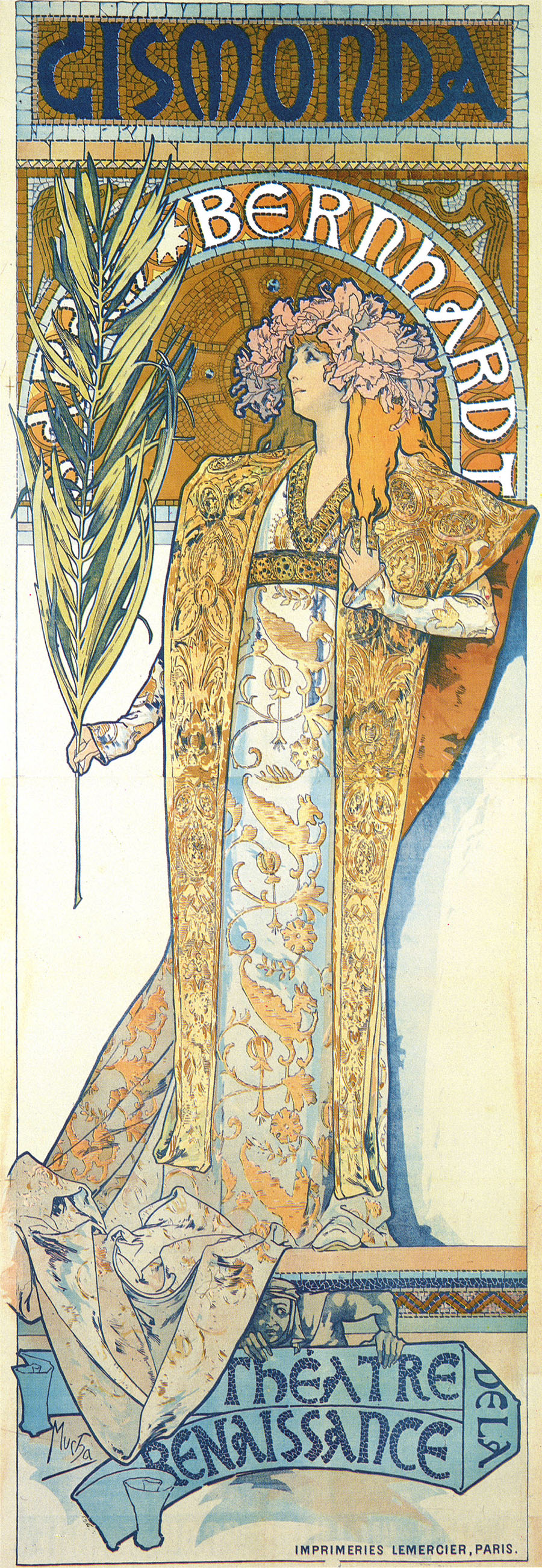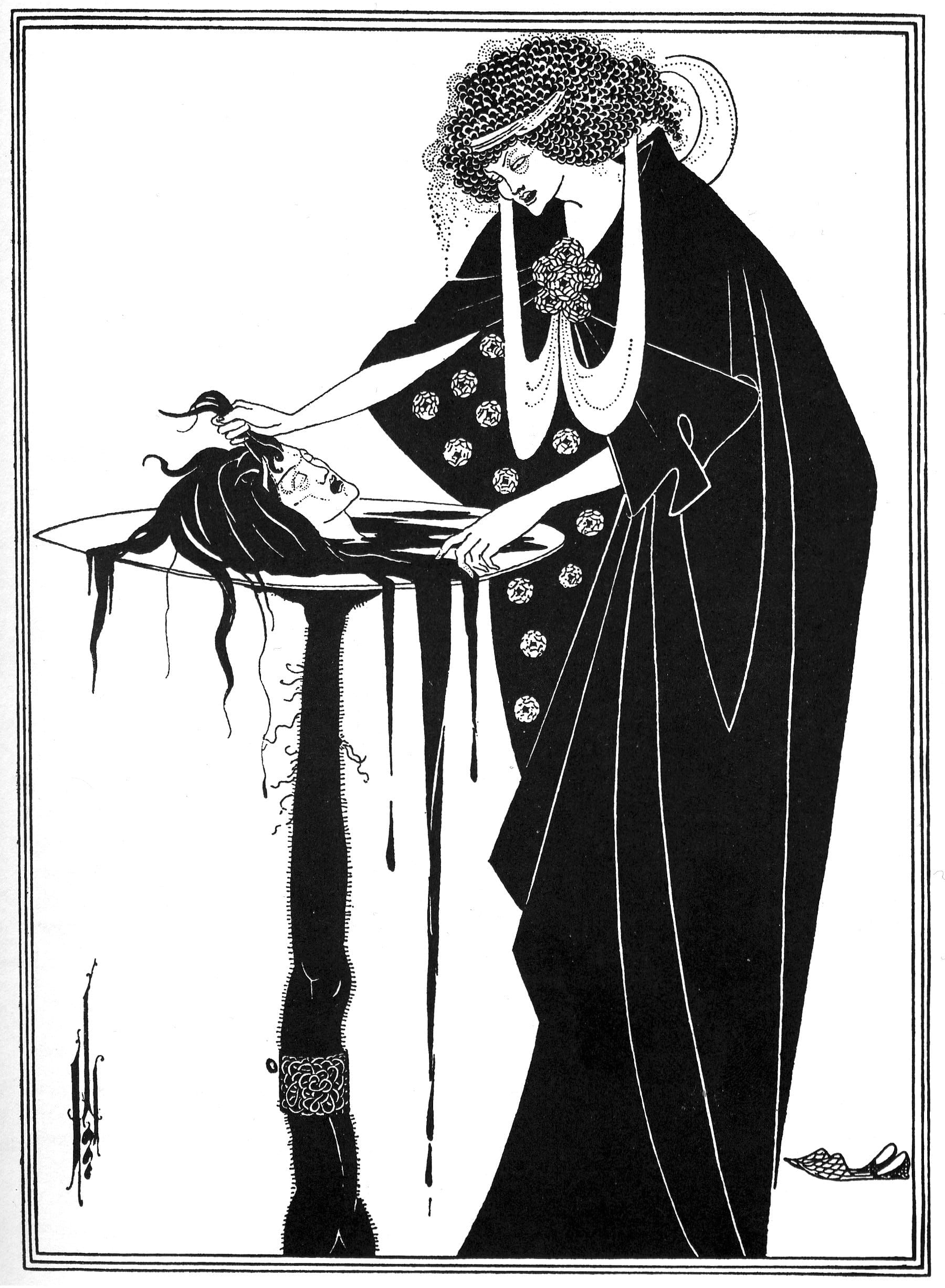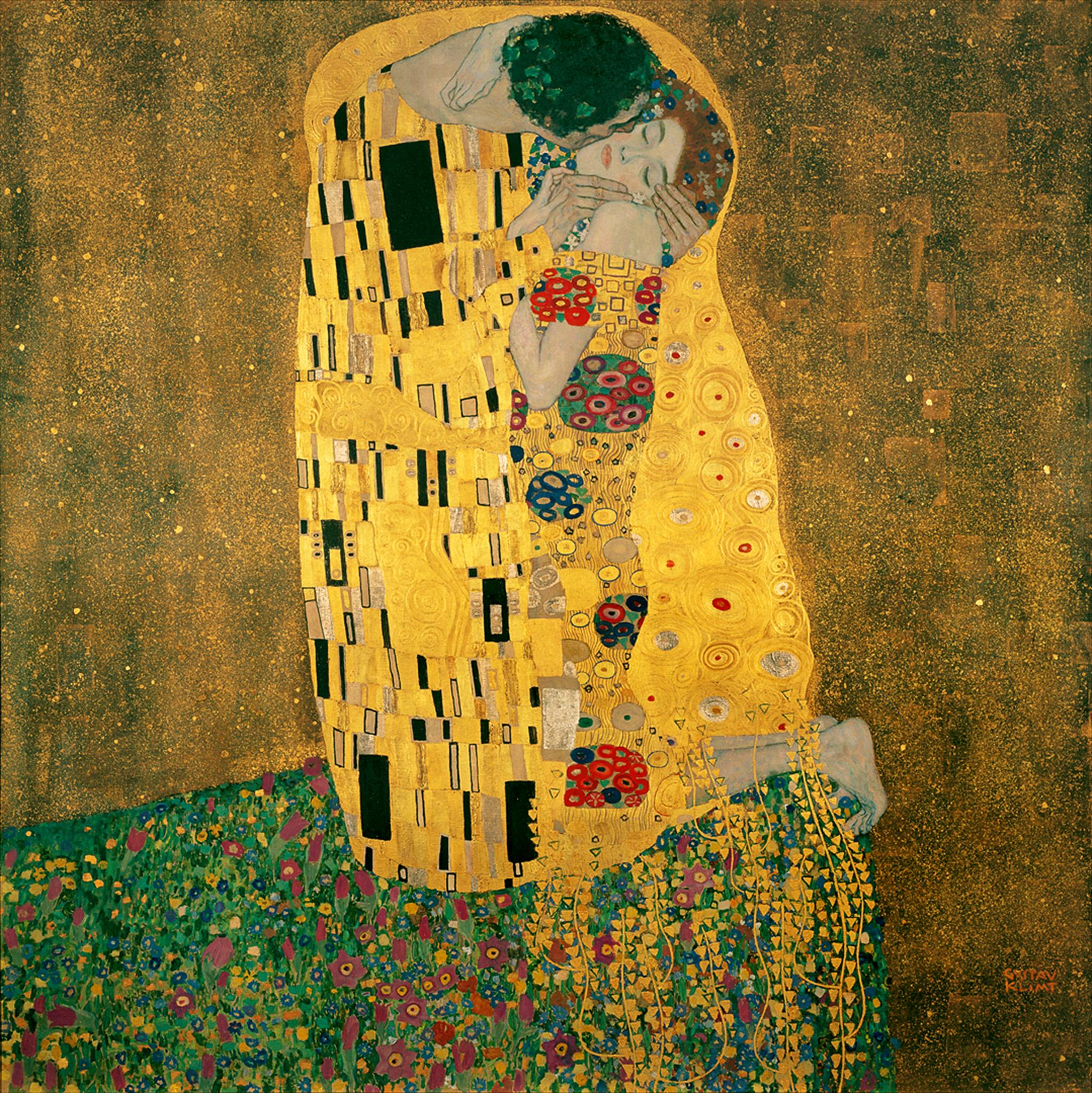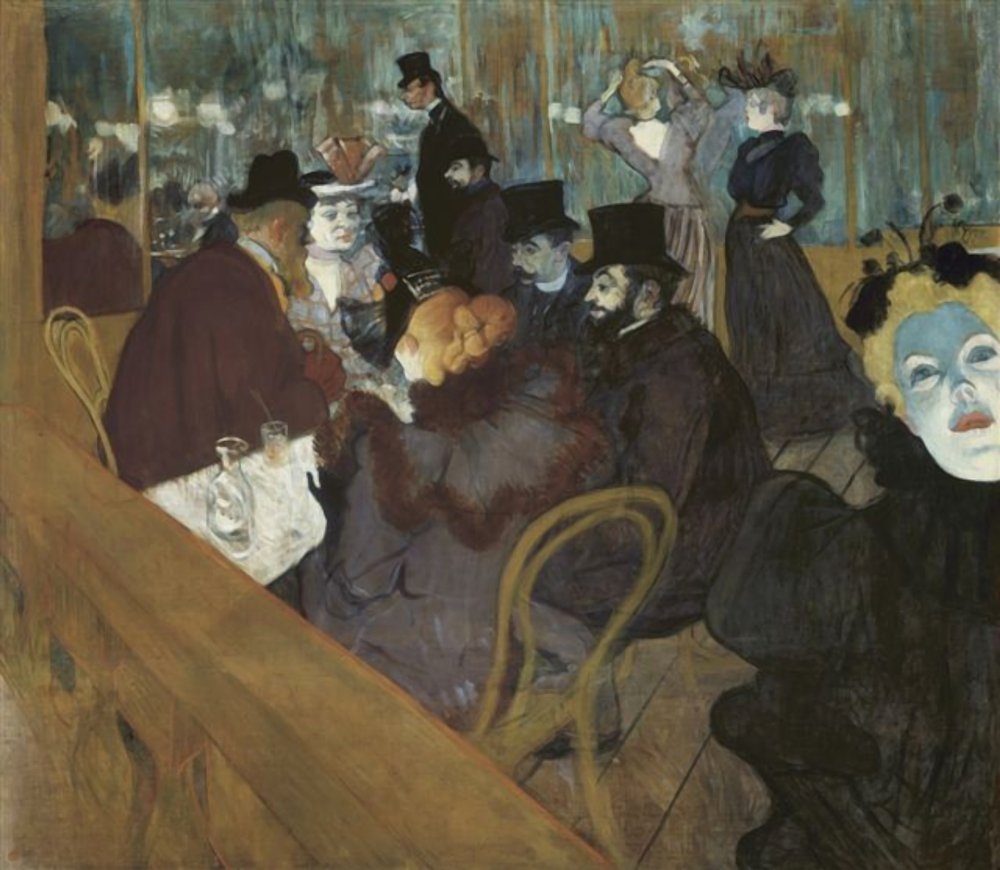.jpg) |
| photo credits: artistsandart.org |
Art Nouveau emerged in England and spread throughout Europe and the United States. In Germany, it was called Judendstil, Sezession in Austria and Modernismo in Spain. Art Nouveau artists broke up with the 19th century historicism and used the world around them as a source of inspiration. Most artists turned to the natural world but they often also chosen erotic themes. The style flourished from 1890 to about 1910 when it was replaced by other modernist styles such as Expressionism and surrealism.
Education (Chittenden Memorial Window) by Louis Comfort Tiffany
| photo credits: wikimedia.org |
Gismonda by Alphonse Mucha
 |
| photo credits: codex99.com |
 |
| photo credit: private-prague-guide.com |
Lithograph poster by the celebrated Czech Art Nouveau artist reveals Mucha’s distinct style which had a major influence on Art Nouveau movement. The 216 x 74.5 cm poster was created in 1894 for the Victorien Sardou’s play Gismonda featuring Sarah Bernhardt. She is depicted on the poster wearing a costume from the last, fourth act of the play. Mucha’s Gismonda can be seen as a part of the exhibition Alphonse Mucha: An Insight into the Artist in Tokyo, Japan, from early March 2013.
The Kiss by Gustav Klimt
The painting marks the height of the artist’s “golden period”. Klimt painted one of his greatest masterpieces between 1907 and 1908, using the traditional oil paint and gold leaf layers. But despite the spectacular depiction, the only features are virtually the faces and hands of the two lovers who are kissing on the edge of a cliff. The painting is owned by the Österreichische Galerie Belvedere in Vienna, Austria, where it is currently featured in a special exhibition in honor of the 150th anniversary of Klimt’s birth.
The Dancer's Reward (Salome) by Aubrey Beardsley
 |
| photo credit: markdery.com |
The illustration for Oscar Wilde’s play Salome depicts Salome with the head of John the Baptist and justifies Beardsley’s reputation as one of the most controversial artists of the Art Nouveau movement. His black ink drawings were dominated by dark themes and grotesque erotica featuring large genitalia, especially those that have been inspired by Japanese shunga. Nevertheless, he had a major influence on other Art Nouveau artists of his era as well as many later artists.
Reclining Woman with Green Stockings by Egon Schiele
The painting that was created in 1917, one year before the artist’s death belongs to the classics of the so-called Schile’s women. It emphasizes female sexuality in both appealing and controversial way. His style that also includes elements of Expressionism caused a lot of controversy and even got him in trouble. In 1912, he was imprisoned for his sexual portrays of very young female models that were viewed as obscene. Schiele’s Reclining Woman with Green Stockings is in private collection.
At the Moulin Rouge by Henri de Toulouse-Lautrec
The oil-on-canvas painting depicts the Moulin Rouge cabaret that opened in 1889. The painting portraits three men and two women sitting at a table, the artist himself with his cousin and physician Gabriel Tapie de Celeyran in the background, the French can-can dancer La Goulue in the background and English singer May Milton in the foreground. The section that shows the singer’s face was at some point removed from the rest of the painting either by Lautrec or his dealer but it was later reattached. The painting that was created between 1892 and 1895 is a part of the collection of the Art Institute of Chicago.
There you have it folks, 6 great art nouveau masterpieces that every artist should know. Are you familiar with some of them? What are your thoughts on these iconic masterpieces? Send us your thoughts in the comment section below and don't forget to share this post with your family and friends on Facebook and Twitter! Thanks!
-XoX0
Post Credit: http://bit.ly/10sDnII
There you have it folks, 6 great art nouveau masterpieces that every artist should know. Are you familiar with some of them? What are your thoughts on these iconic masterpieces? Send us your thoughts in the comment section below and don't forget to share this post with your family and friends on Facebook and Twitter! Thanks!
-XoX0
Post Credit: http://bit.ly/10sDnII




No comments:
Post a Comment